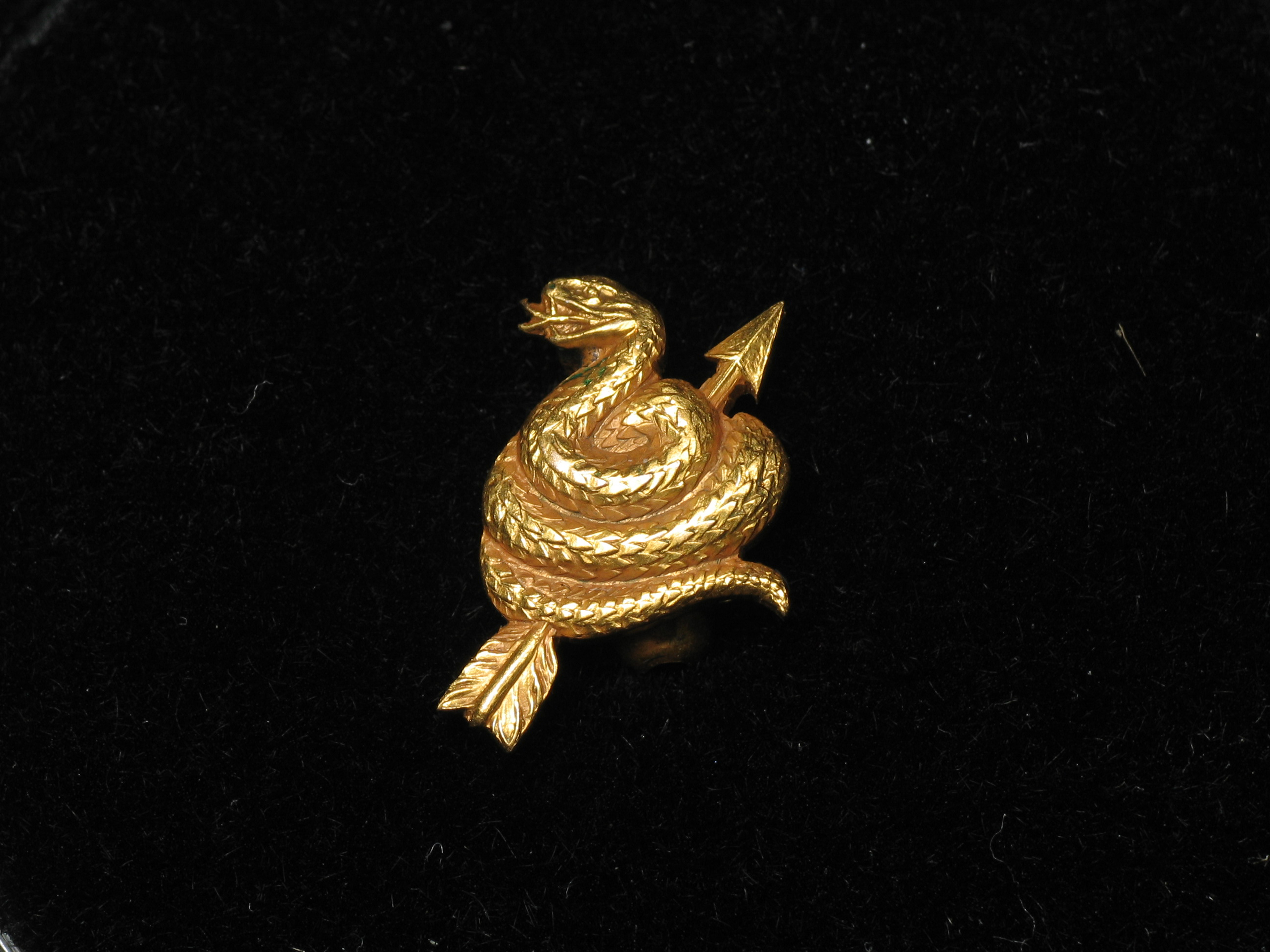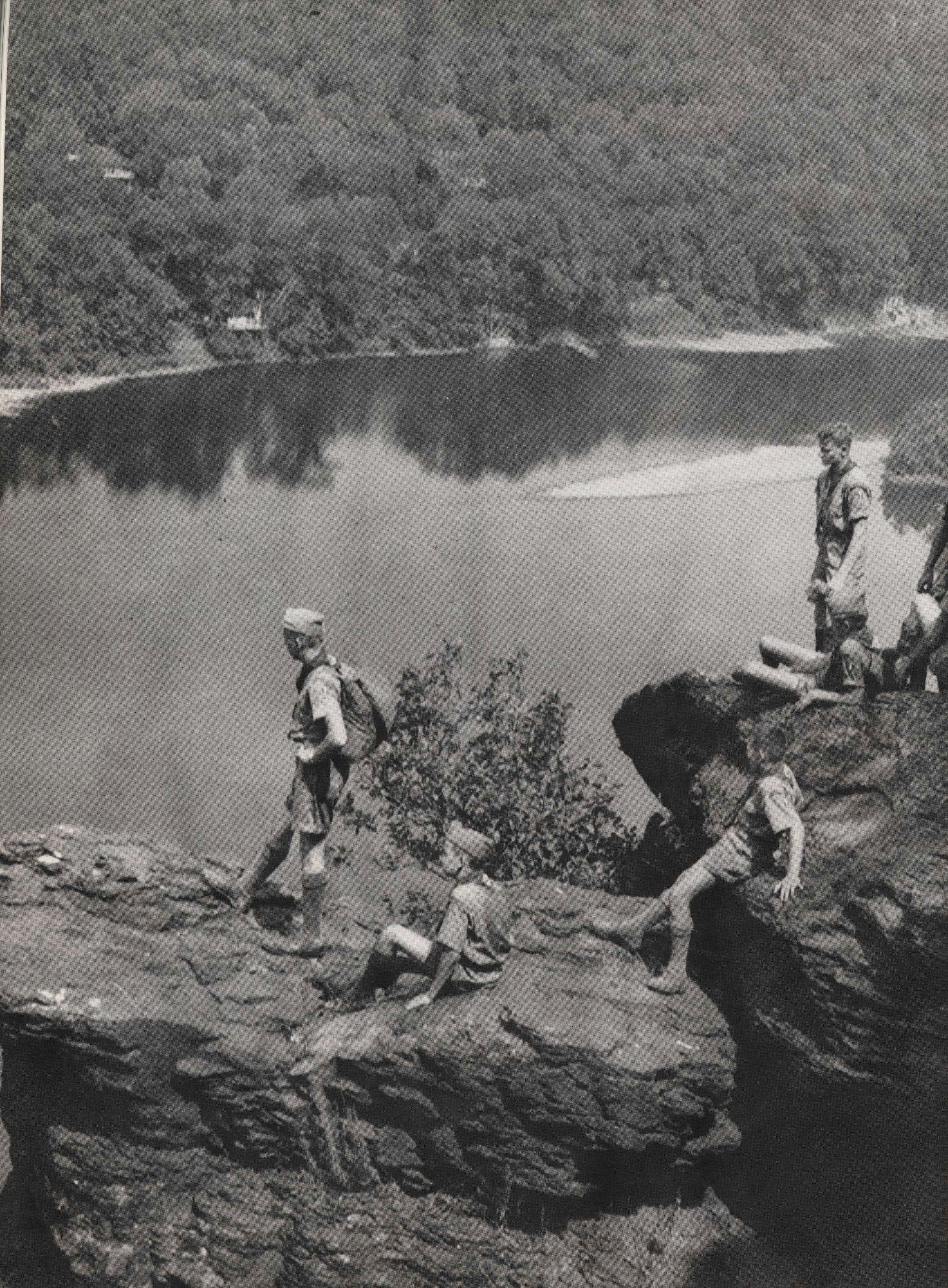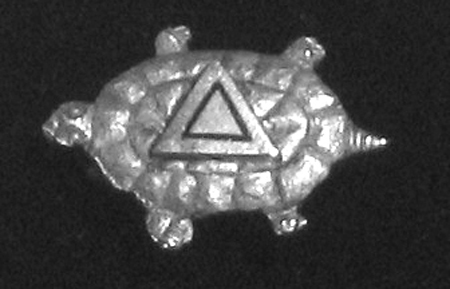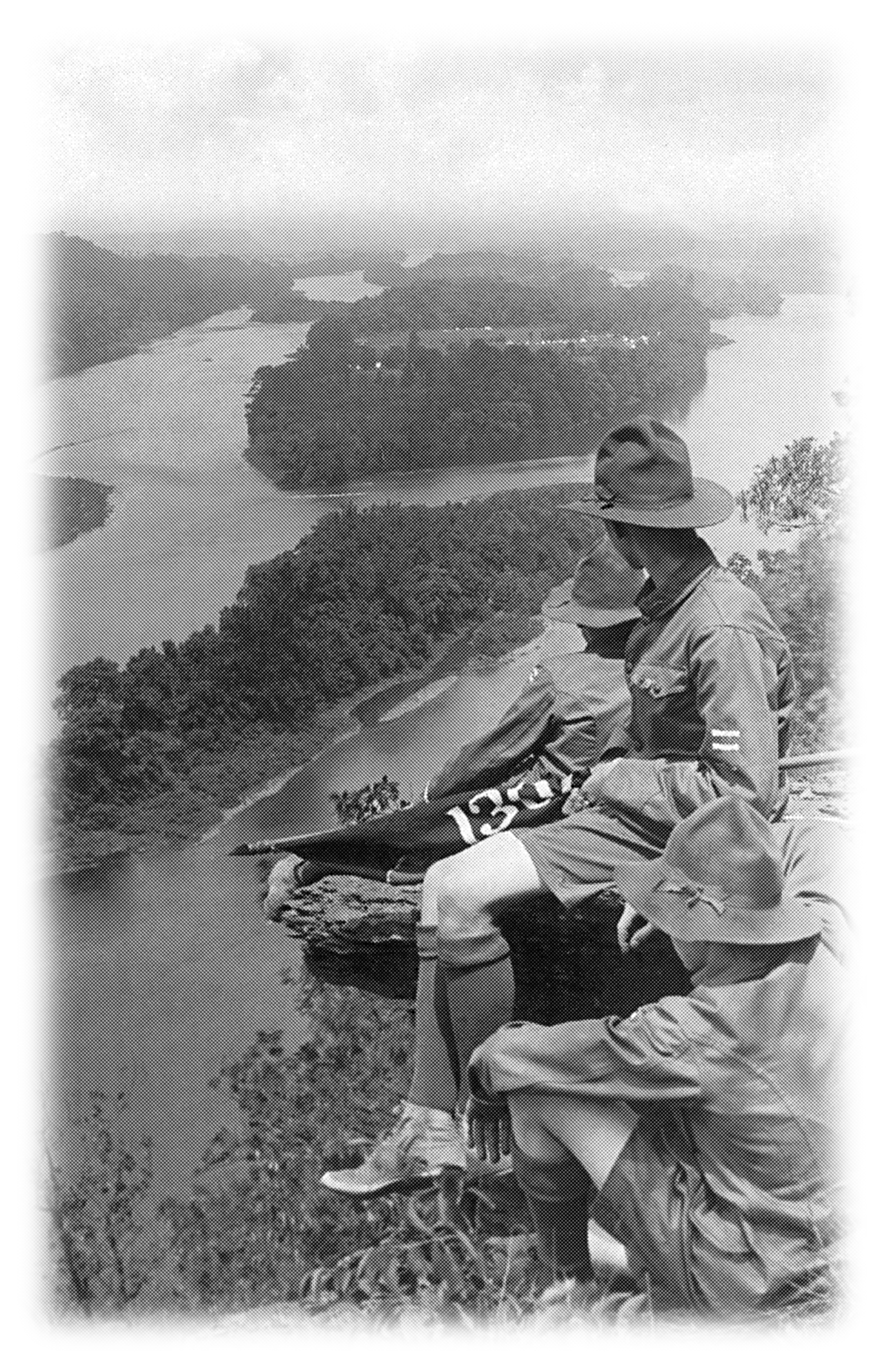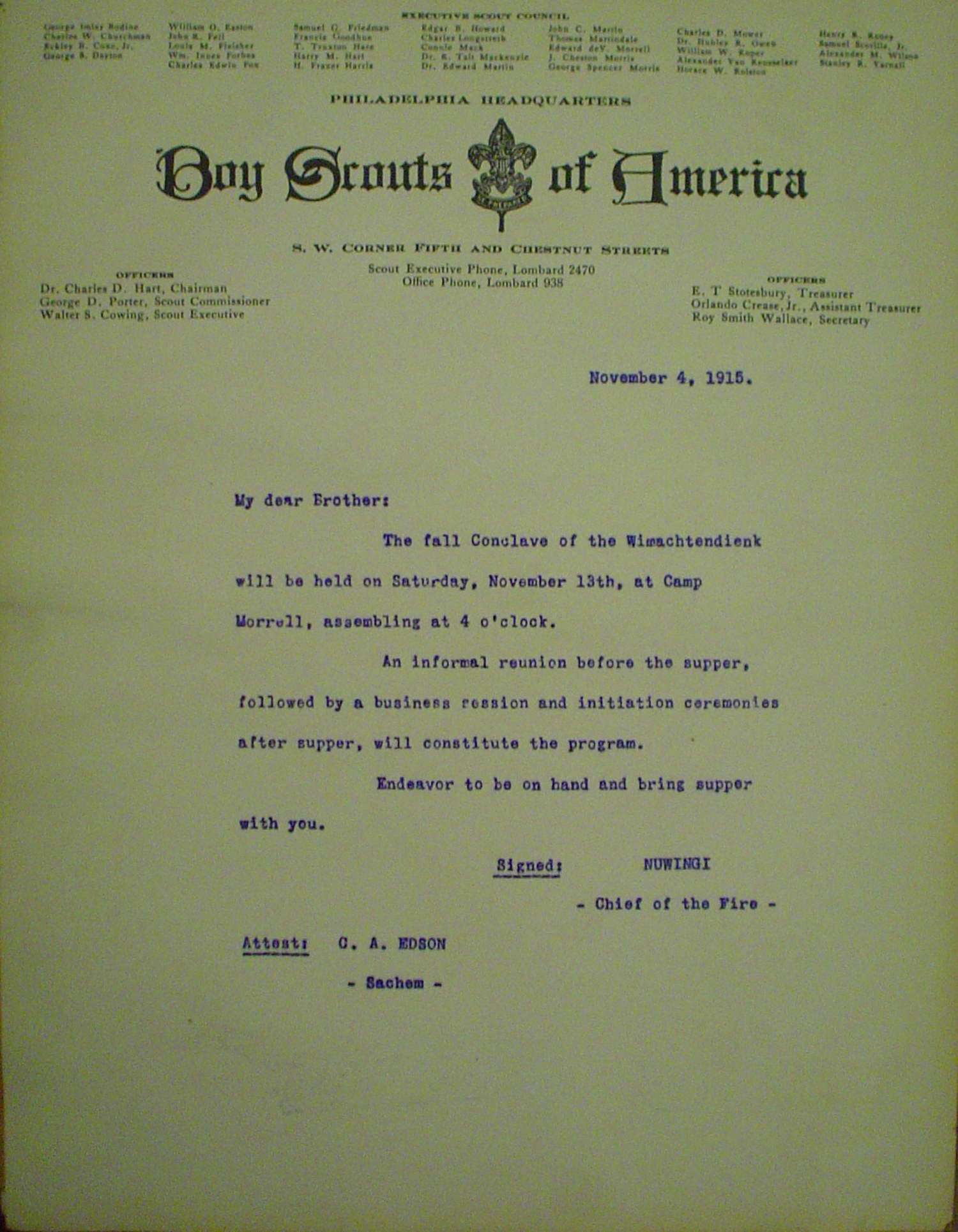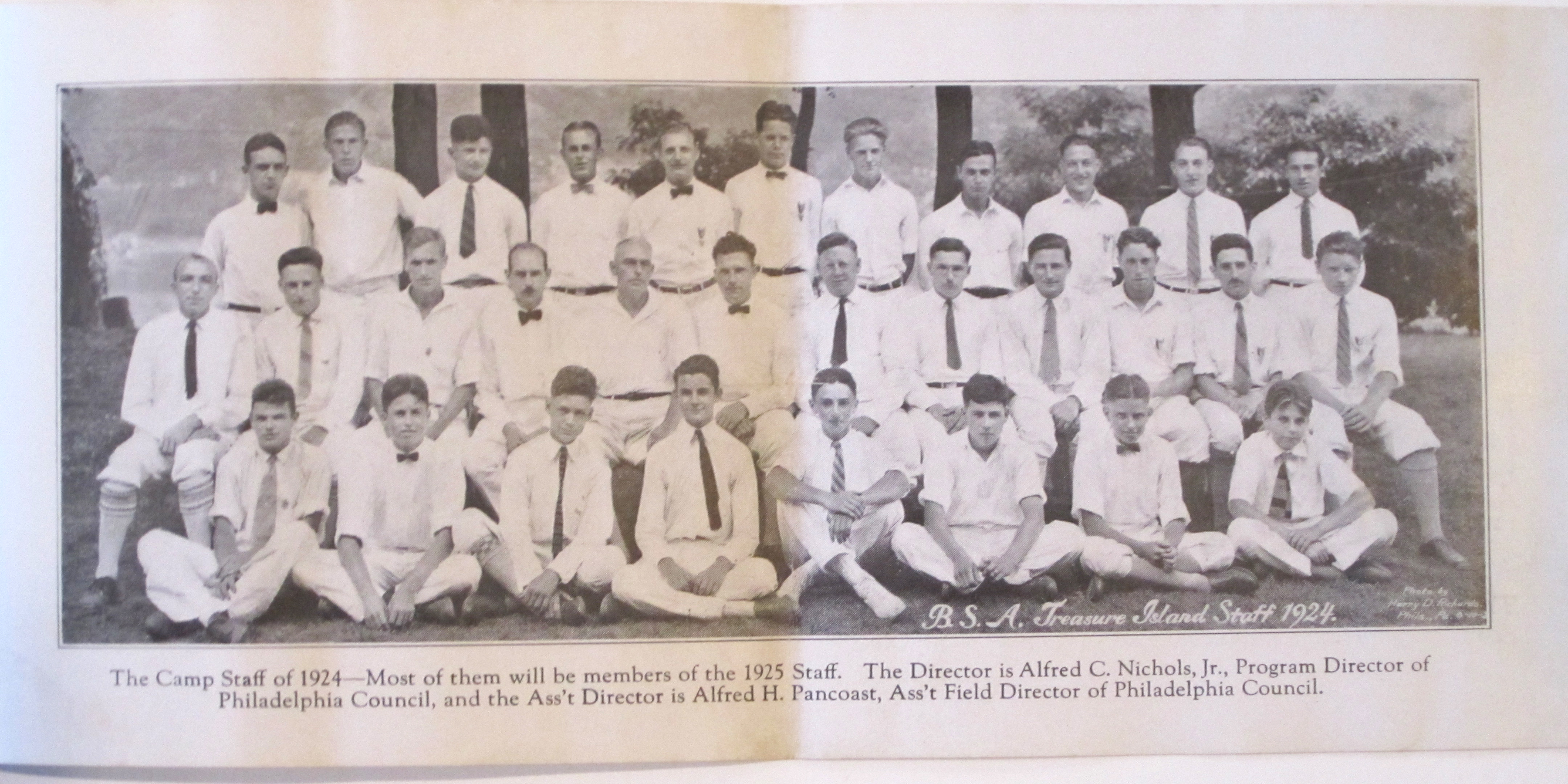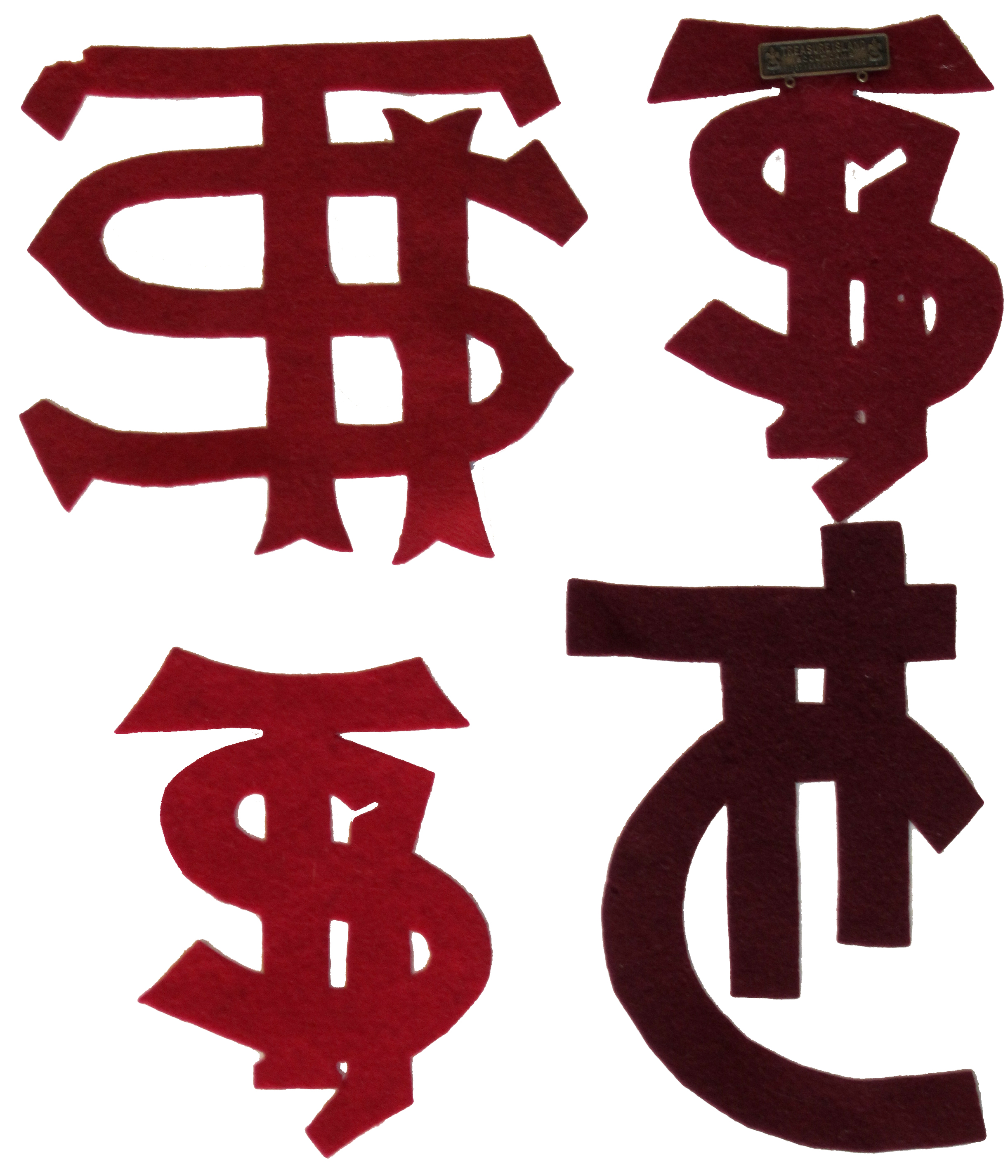Edson's Second Degree
There is a lack of consensus regarding the date of Carroll A. Edson’s Second Degree induction. Evidence exists that point to three different years: 1915, 1916 and 1917. (As an editorial decision the OA History Timeline has placed the date of Edson’s Vigil as 1917 as the most likely year based upon the evidence.)
The evidence that points to 1915 or 1916 as the year of Edson’s Second Degree is found in the writings of George W. Chapman. Chapman wrote the following excerpt that would seem to indicate that Edson kept his Second Degree (Vigil) in 1915 or 1916:
The second man on whom the Vigil Honor was conferred was Carroll Edson. The minutes of Unami Lodge carry a brief mention of this under the date of October 18, 1915, saying, ‘Carroll A. Edson, Sachem, was given the test. He was given the name Ahoweapowi, making him a member of the Second Degree.”
The Second Degree (Vigil Honor) was conferred at the annual fall meeting of Unami Lodge, held at Van Renesalaer Cabin, a week-end camping spot of the Philadelphia Council near Camp Hill, Montgomery County, Pennsylvania.
There are multiple errors of fact contained in this account. First, October 18, 1915 (a Monday) was prior to the first organizational meeting at Camp Morrell. The term Second Degree was not even in use in 1915, that required the framing of the 1916 Constitution of Wimachtendienk. Second, the term Unami Lodge had not been created yet, indeed it had not been invented by 1916 either. Finally, the first annual fall meeting of Wimachtendienk was not until 1916. It is believed that the above entry was written after the fact and was in error. Efforts to obtain copies of the Unami Minute Book have revealed that the book has not existed for decades.
The most persuasive account of Edson’s Second Degree initiation comes from the best possible source, Edson himself. Edson wrote a letter in 1942 to Moqua Chapter of Owasippe Lodge in Chicago at their request for the Moqua Chapter 20th Anniversary yearbook. In it Edson discussed the beginnings of the Wimachtendienk. As a part of that letter Edson shares the following story of his induction into the Second Degree:
… Shortly after that, I went to the National Staff, and shortly after that entered the Army. It was while in service, I believe in the fall of 1917, that I spent another weekend at one of the outlying camps of the Philadelphia Council, at an Order meeting. While there I received the 'Second Degree' initiation, we then called it – the present Vigil Honor.
This account is persuasive because it was written by Edson and he references specific events that also track to 1917. Edson was not on National Staff until 1917. He did not join the army until 1917 when the United States entered World War I. He has specific recall of being on Army leave (from New York) to travel to the fall Camp Van Renesalaer (the outlying camp) meeting for his initiation.
1, Ceremonies, Founders, OA, Scouting

